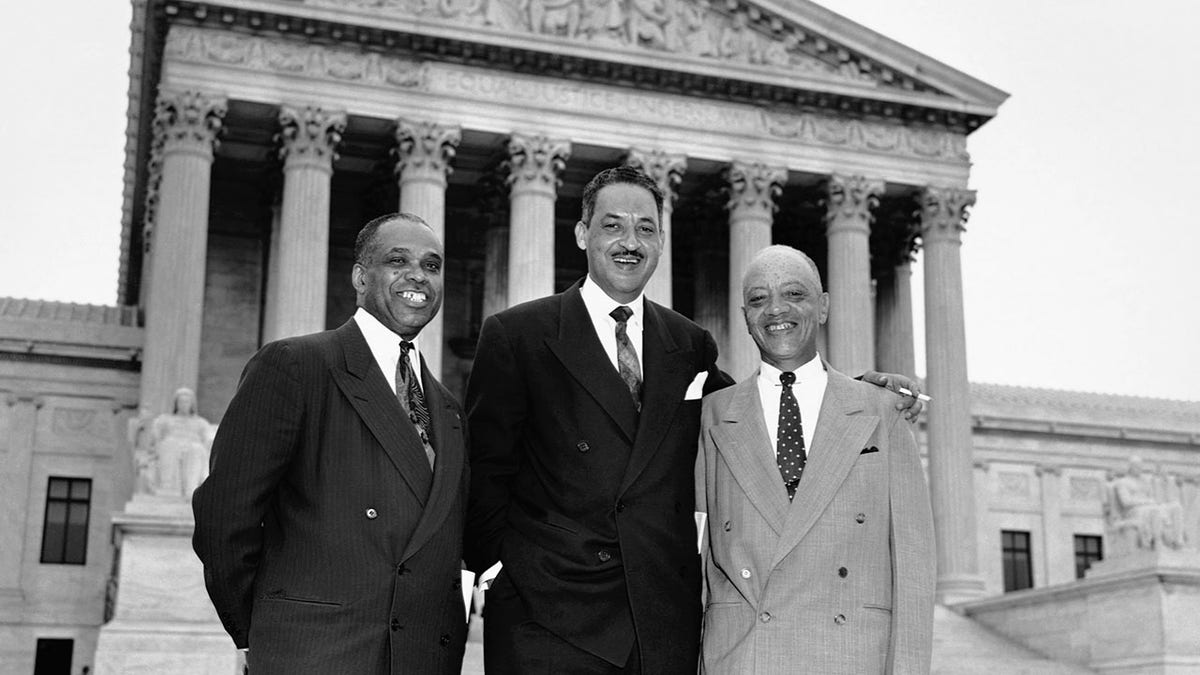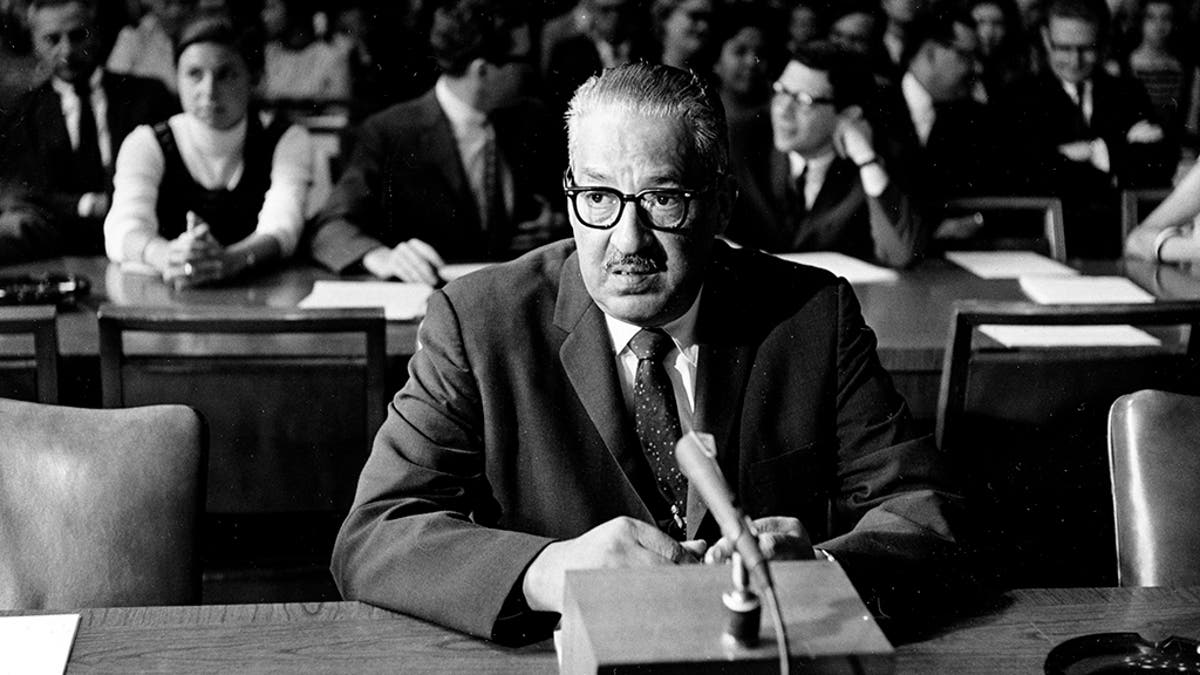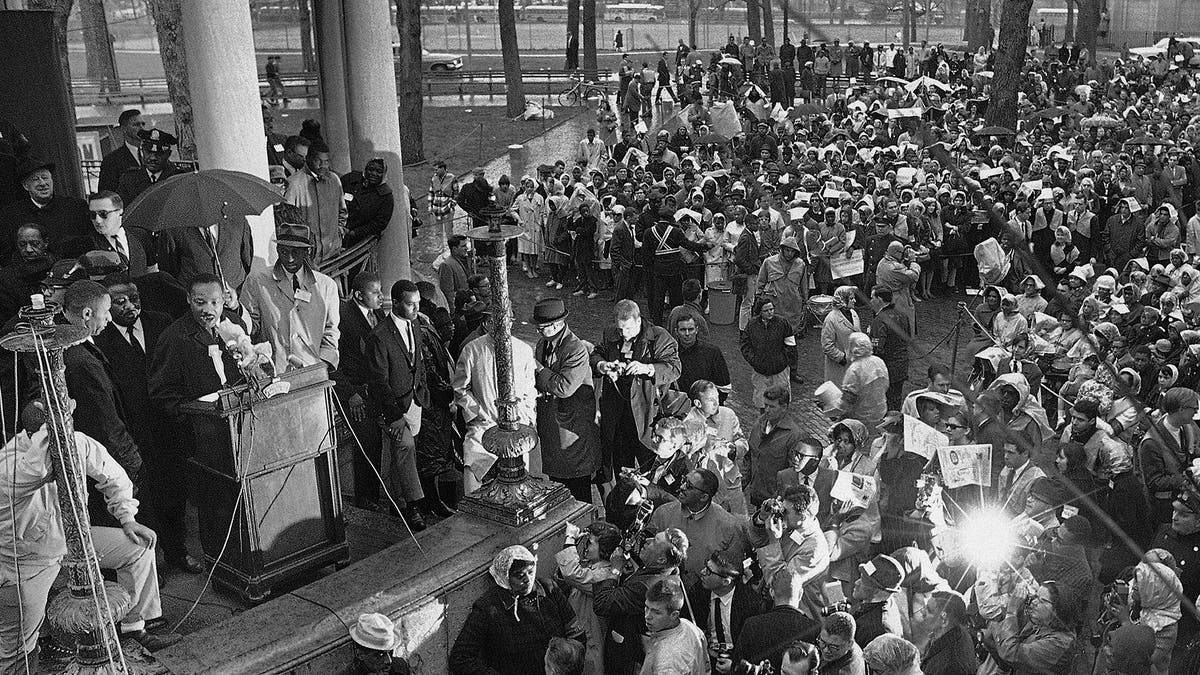Fox News Flash top headlines for February 23
Fox News Flash top headlines are here. Check out what's clicking on Foxnews.com.
Among the landmark decisions from the Supreme Court, Brown v. Board of Education ranks among the most influential of all time, as it resoundingly declared that "separate… facilities are inherently unequal."
The unanimous decision was issued on May 17, 1954, and it initiated the process of integration in schools across the country -- slow and stuttered as it has been.
BLACK HISTORY MONTH 2021 FOCUSING ON 'THE FAMILY' AS A THEME
The decision overturned a policy that had been in place since the end of the 19th century. It was not the definitive end to segregation policies, but Brown v. Board of Education remains one of the most consequential Supreme Court decisions in U.S. history.
What prompted the initial lawsuit?
The Browns, a family in Topeka, Kansas, filed a class action lawsuit along with 12 other families against the Topeka Board of Education, after the board mandated that the Browns send their daughter to a school farther from where they lived due to segregation policies in the district.
An initial ruling by the District Court of Kansas went against the families, citing the 1896 decision Plessy v. Ferguson, which allowed for separate facilities as long as they were of equal quality, according to History.com.

Attorneys who argued the case against segregation stand together smiling in front of the U.S. Supreme Court Building after the High Tribunal ruled that segregtion in public schoolsis unconstitutional. Left to right are: George E.C. Hayes, Washington, DC; Thurgood Marshall, special counsel for the NAACP; and James Nabrit, Jr., Progessor and Attorney at law at Howard University in Washington.
What were the arguments?
The central issue in the Brown case, as well as in Plessy v. Ferguson, was the interpretation and application of the 14th Amendment of the U.S. Constitution.
Particularly, the Equal Protection Clause, according to which no state shall "deny to any person within its jurisdiction the equal protection of the laws."
5 DOCUMENTARIES TO STREAM DURING BLACK HISTORY MONTH
Discussion about the equal application of the law continues to this day, with some senators raising questions regarding equal justice during Merrick Garland's confirmation hearing for U.S. attorney general this week.
This clause was the basis used to argue Plessy v. Ferguson, establishing a decision that separate facilities could remain as long as they were equal.
Brown v. Board of Education challenged that decision, believing that separate was never equal.

Thurgood Marshall was nominated and confirmed to the Supreme Court in 1967. (AP)
What was the resolution?
Thurgood Marshall, then a special counsel for the NAACP, brought the lawsuit to the U.S. Supreme Court in 1952.
The case was initially argued in December of that year, combined with a number of other cases that were filed and appealed across the country, according to the NAACP.
The initial Topeka district court ruling found that the facilities, teachers and other broad elements of Black and white schools were equal.
MARCH ON WASHINGTON, 1963: WHAT TO KNOW
The court heard arguments again in 1953 as the court built a consensus, with supporters of ruling in favor of Brown afraid that any dissent would be seen as justification by those who opposed integrating schools.
The court delivered a unanimous decision, with an opinion written by Chief Justice Earl Warren that supported the view that "separate educational facilities are inherently unequal."

In this April 23, 1965 file photo, Dr. Martin Luther King Jr., under umbrella at left, addresses civil rights marchers on Boston Common after a march from the Roxbury section of the city to protest segregation in schools, unequal employment and housing concerns. Disparities between White and Black workers in lucrative fields in metro areas around the country still linger 50 years after King's death. (AP Photo)
What was the impact?
The rollout of the decision was slow, and only a year later the Supreme Court heard arguments by schools that complained of the burden brought on by desegregation.
Some states opposed the decision and deliberately slowed the process of integration, leading to Brown II. The Supreme Court only ordered that desegregation occur "with all deliberate speed."
But the pace continued to be slow and a decade later the country largely had not undertaken the process of integration.
One of the demands at the March on Washington in 1963 was that schools immediately integrate following the Supreme Court ruling.
CLICK HERE TO GET THE FOX NEWS APP
Thurgood Marshall would go on to serve as a justice on the U.S. Supreme Court, with cases like Brown and others acting as prime examples of his understanding and approach to the law.


